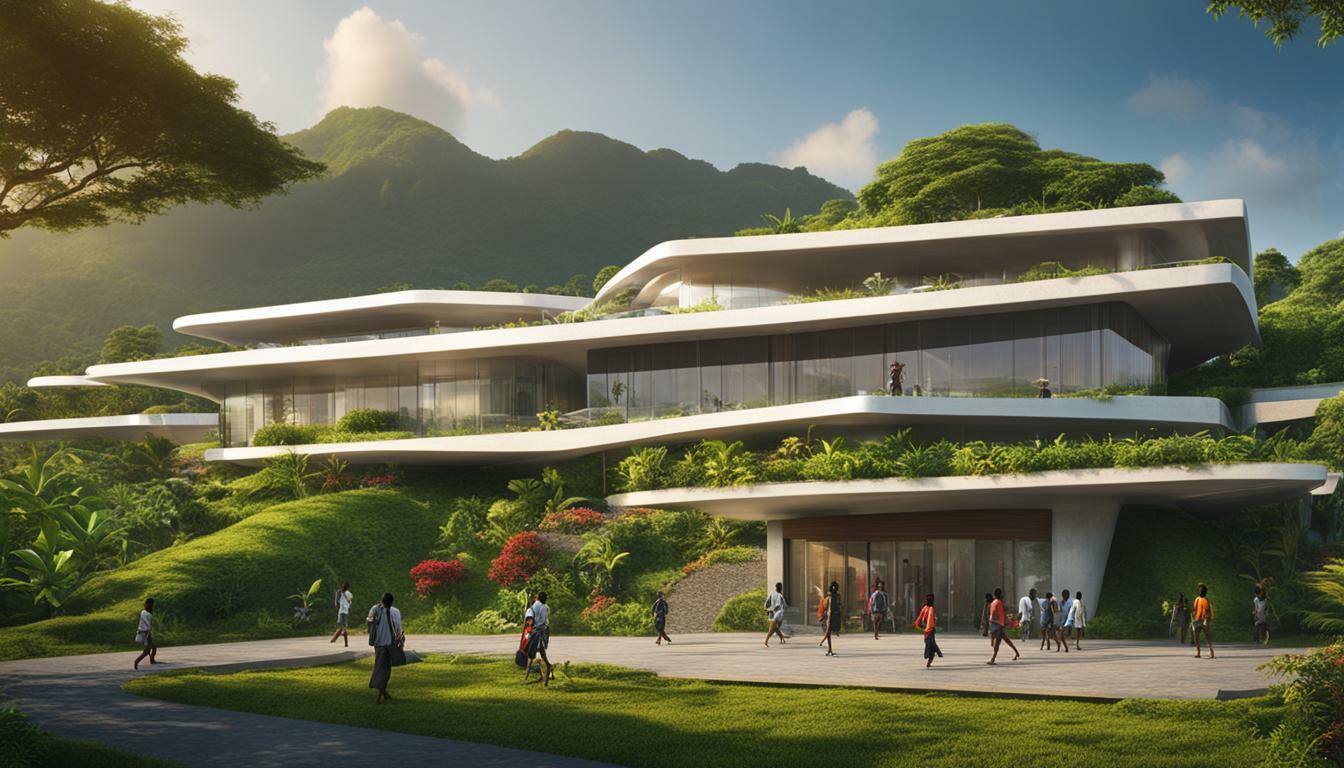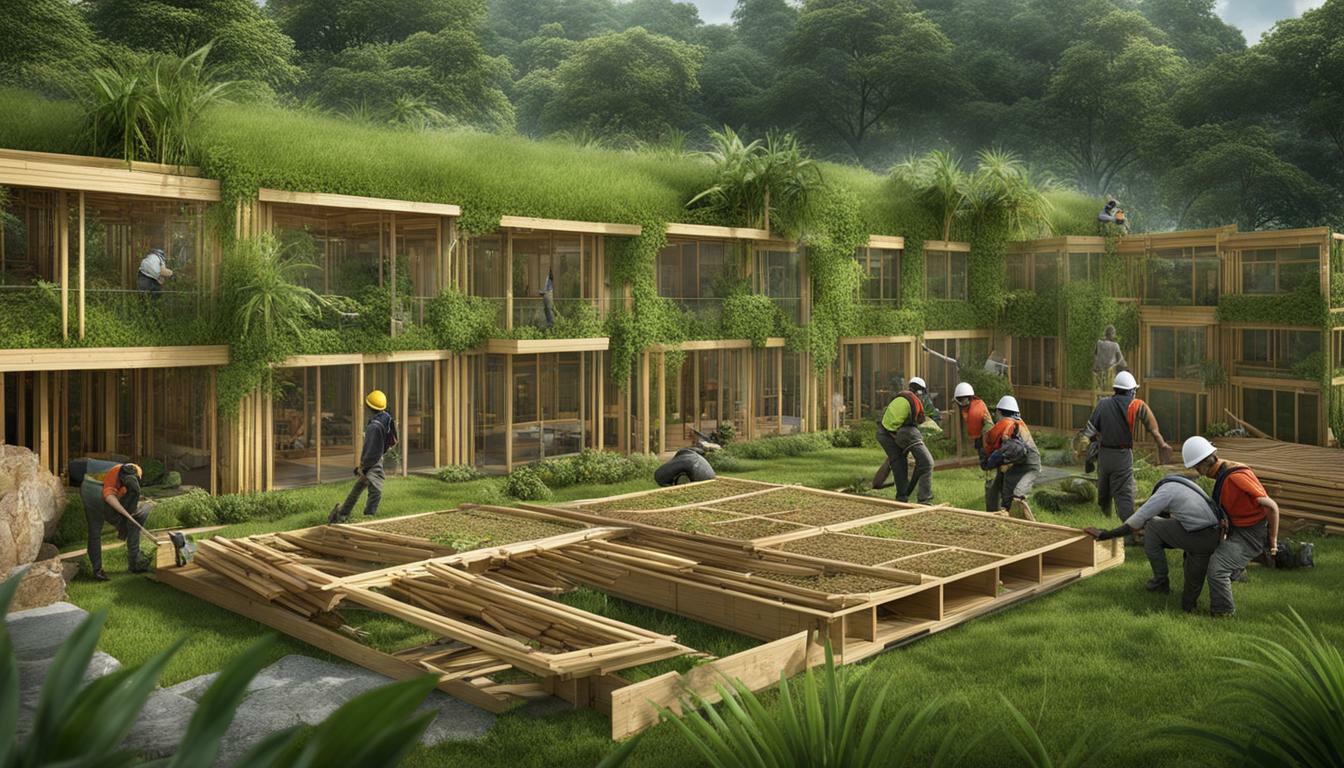Dominican Republic Green Building History
The Dominican Republic has a rich history of embracing eco-friendly construction practices and sustainable design. Beginning with early initiatives to promote sustainable development, the country has continued to prioritize environmental preservation and the incorporation of green building practices in architectural designs.
Over the years, the Dominican Republic has implemented various environmental policies and initiatives to promote the creation of sustainable infrastructure and energy-efficient buildings. From the adoption of renewable energy projects to the use of innovative construction techniques, the country has made significant strides in reducing its carbon footprint and promoting long-term sustainability.
In this section, we will explore the fascinating history of green building in the Dominican Republic and how the country continues to lead the way in sustainable design and construction practices.
- The Dominican Republic has a strong commitment to promoting eco-friendly construction practices and sustainable design.
- The country has implemented various environmental policies and initiatives to promote the creation of sustainable infrastructure.
- The adoption of renewable energy projects and innovative construction techniques has significantly reduced the country’s carbon footprint.
- The Dominican Republic continues to prioritize environmental preservation and the incorporation of green building practices in architectural designs for long-term sustainability.
Sustainable Design in Dominican Republic
The concept of sustainable design is not new to the Dominican Republic. Over the years, the country has taken bold environmental initiatives to promote sustainable design in Dominican Republic and encourage the integration of eco-friendly elements in architectural designs.
One of the notable environmental initiatives taken by the Dominican Republic is the establishment of the National Council for Climate Change and Clean Development Mechanism (CNCCMDL). This council was created to implement policies and measures that address climate change and promote sustainable development in the country.
Moreover, the Dominican Republic has set a national goal of achieving 25% renewable energy by 2025, which signals a significant shift towards a sustainable future. This transition to renewable energy has paved the way for the implementation of innovative sustainable design solutions, such as the use of passive solar design and energy-efficient building materials.
Sustainable Design in Dominican Republic
In addition to environmental initiatives and the shift towards renewable energy, the Dominican Republic has developed an awareness of sustainable design in Dominican Republic. Architects in the country are increasingly incorporating sustainable elements in their designs, such as green roofs, rainwater harvesting systems, and natural ventilation.
The adoption of sustainable design practices has led to the development of buildings that are not only energy-efficient but also blend seamlessly with their natural surroundings. This is exemplified by the Altos de Chavón Amphitheatre in La Romana, a stunning example of sustainable design that is entirely integrated into the natural landscape.
As the Dominican Republic continues to prioritize sustainable design and environmental initiatives, the future looks bright for the country’s green building practices. With a continued focus on sustainable design in Dominican Republic, the country is poised to become a leader in eco-friendly construction practices and green architecture.
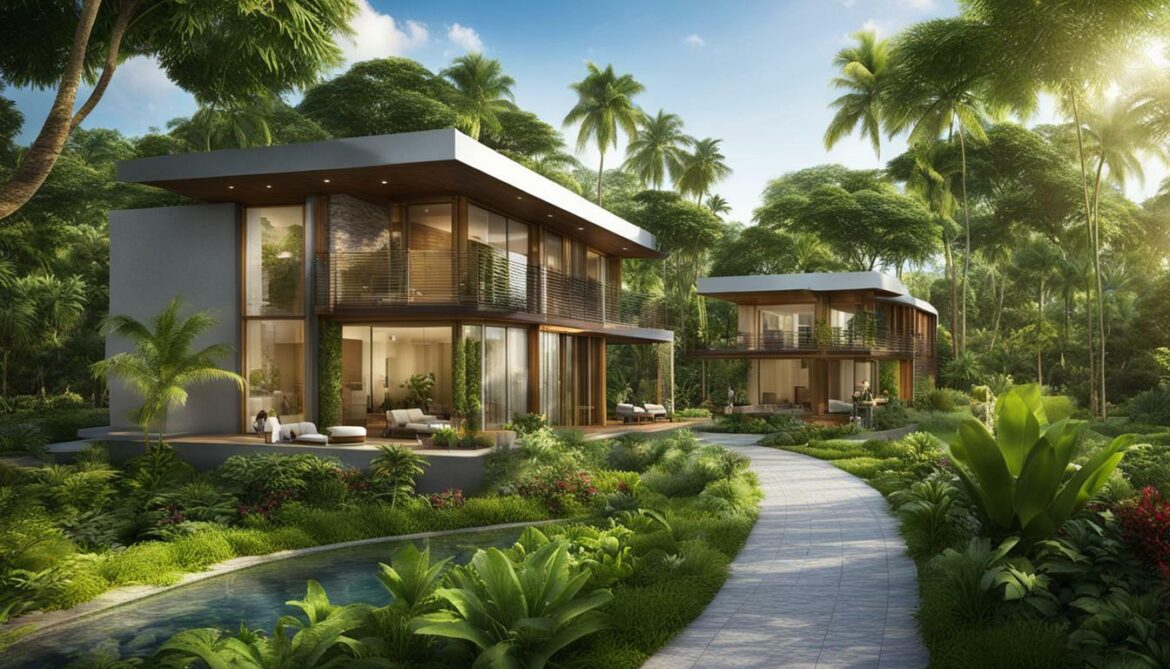
In recent years, the Dominican Republic has demonstrated an increased commitment to eco-friendly construction practices, paving the way for green building development in the country. Architects and builders alike are adopting innovative techniques to reduce environmental impact and promote sustainable design.
One such technique is the use of sustainable building materials, including those made from renewable resources such as bamboo, cork, and recycled materials. These materials not only minimize waste but also appeal to the growing demand for eco-friendly homes and buildings.
| Advantages of eco-friendly construction practices: |
|---|
|
Builders are also incorporating green building techniques such as passive solar design, which maximizes natural light and heat to reduce the need for artificial lighting and heating. This not only saves energy but also provides a comfortable living environment for occupants.
Furthermore, the implementation of eco-friendly construction practices is not limited to residential buildings but also extends to commercial and industrial structures. Large-scale projects such as hotels and resorts have adopted green building practices, reducing their carbon footprint while still providing luxurious accommodations for guests.
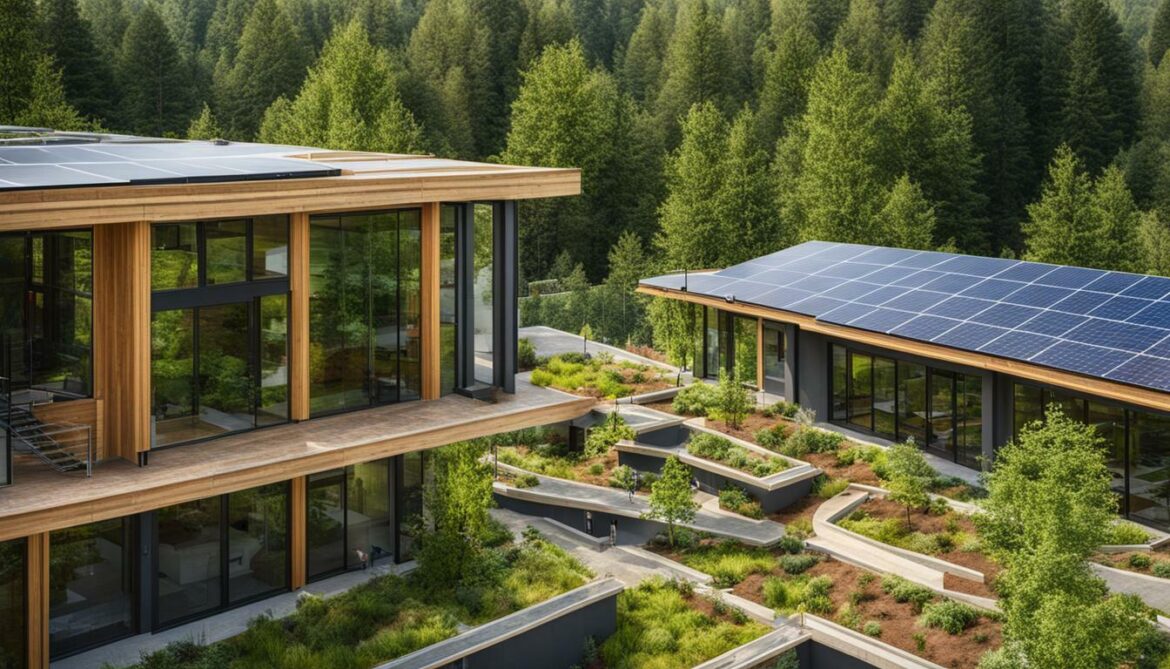
“Sustainability is about ecology, economy, and social justice. It is a balance between these three elements, and it is the responsibility of architects and builders to ensure we achieve this balance through sustainable building practices” – Architect Victor Ramirez
The green building movement in the Dominican Republic is gaining momentum, with continued efforts to promote eco-friendly construction practices and sustainable design. The benefits of such practices are far-reaching, not only for the preservation of the environment but also for the well-being of its residents and the future of the country as a whole.
Sustainable Architecture in Dominican Republic
The Dominican Republic has been at the forefront of sustainable architecture in the Caribbean region. Designers and architects have been integrating environmental considerations into their designs for over two decades, with notable examples of sustainable architecture projects throughout the country. These buildings prioritize energy efficiency, the use of renewable materials, and integration with the natural surroundings, all contributing to the overall sustainability of the region.
One such example is the Casa en las Rocas, located on the north coast of the country. This stunning residence was designed by Puerto Rican architect, Carlos Ferrater, and boasts an impressive 360-degree view of the ocean. The house’s design incorporates environmentally friendly features such as extensive use of solar panels for electricity and hot water, a rainwater harvesting system, and the use of local and recycled materials in the construction process.
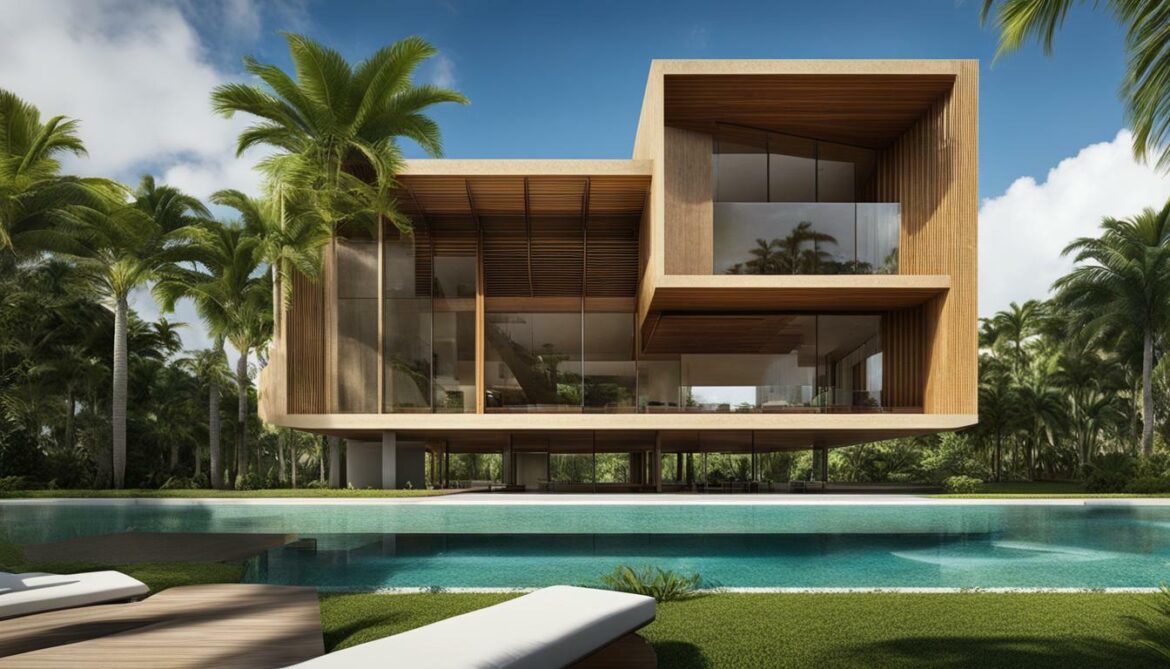
Another noteworthy example of sustainable design is the Hotel Punta Islita, situated in the Guanacaste region. The hotel’s design blends in naturally with the surrounding environment, and features a unique approach to waste management and energy conservation. The hotel uses a variety of environmentally friendly technologies including solar power, biogas from kitchen waste, and a greywater treatment plant.
In the capital city of Santo Domingo, the recently completed Palacio de los Deportes Virgilio Travieso Soto, is a state-of-the-art sporting facility that is also a model of energy efficiency. The building incorporates high-tech features such as energy-efficient lighting, a rainwater harvesting system, and solar panels that generate more than half of the building’s electricity needs.
These examples showcase the innovative approaches that Dominican architects and designers have taken to sustainable architecture. The country continues to push the boundaries of sustainable design, creating a brighter and greener future for all.
Renewable Energy Projects in the Dominican Republic
In an effort to reduce its carbon footprint and promote sustainability, the Dominican Republic has implemented several renewable energy projects. These projects not only contribute to the country’s clean energy goals but also provide economic benefits and job opportunities.
One of the most significant renewable energy projects in the Dominican Republic is the Monte Plata Solar Power Plant. This solar energy plant, located in the Monte Plata province, covers an area of 200 hectares and has a capacity of 69 megawatts. It is the largest solar power plant in the Caribbean, generating enough electricity to power more than 50,000 homes while offsetting approximately 110,000 metric tons of carbon dioxide emissions per year.
Another notable renewable energy project is the Wind Farm in the Enriquillo region. The wind farm has 19 turbines and a total capacity of 50 megawatts, generating enough electricity to power more than 30,000 homes. The project has contributed to a significant reduction in the country’s dependence on imported fossil fuels while providing job opportunities for the local community.
The Dominican Republic has also implemented small-scale renewable energy projects, such as the use of solar panels in households and businesses. These initiatives serve to promote decentralization of energy production and reduce the country’s reliance on large power plants.
Furthermore, the country has shown its commitment to renewable energy through legislation. The National Energy Commission has set a goal to have 25% of the country’s energy generated from renewable sources by 2025. The government provides incentives to promote clean energy investments and has established a net metering program to encourage the use of solar energy by households and businesses.
The Dominican Republic’s focus on renewable energy projects and its commitment to sustainable development make it a leader in the Caribbean region. The country’s efforts to promote clean energy and reduce carbon emissions serve as a model for other nations to follow.
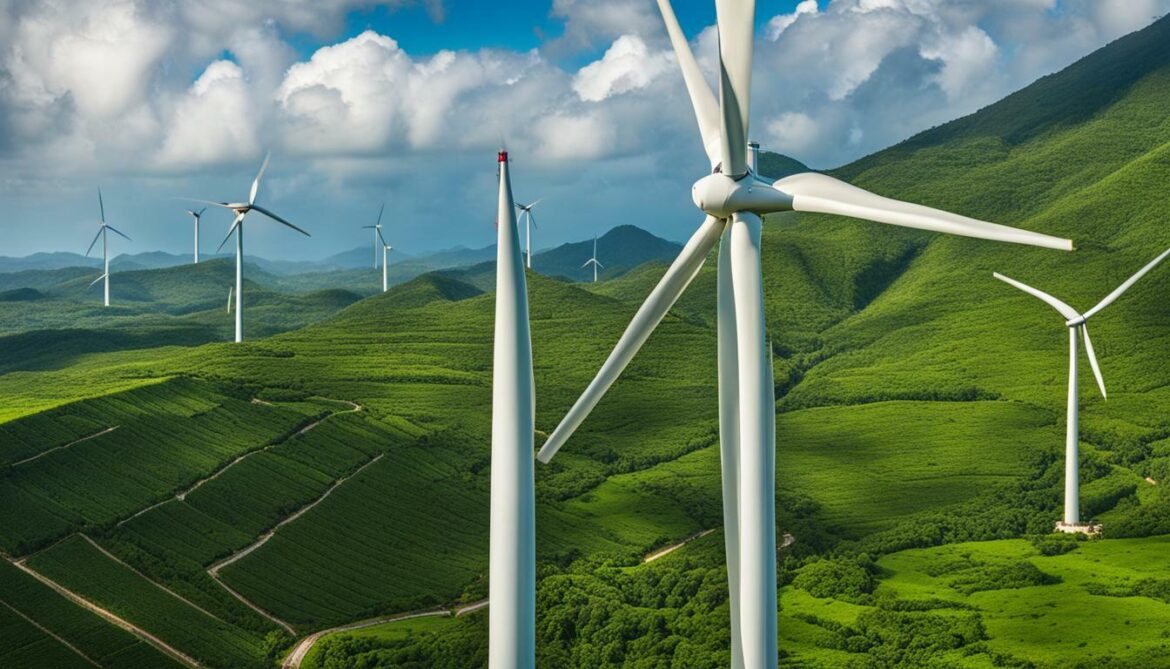
The Dominican Republic has been dedicated to implementing sustainable construction techniques in order to reduce environmental impact and promote long-term sustainability. These innovative methods and materials have been used to enhance energy efficiency and minimize the consumption of non-renewable resources.
One such technique is the use of recycled materials. Recycled glass, metal, and concrete have been used in the construction of buildings, reducing waste and decreasing the need for new resources. This not only contributes to the sustainability of the building itself, but also to the environment as a whole.
Another sustainable construction technique is the use of green roofs. These roofs are covered in vegetation, providing insulation and reducing the amount of energy required for heating and cooling. They also absorb rainwater, reducing runoff and improving water quality.
The Dominican Republic has also prioritized the use of renewable energy sources in construction. Solar panels, wind turbines, and geothermal systems have been implemented to reduce reliance on non-renewable energy sources, decreasing the carbon footprint of buildings and infrastructure.
Additionally, the country has implemented building designs that prioritize natural ventilation and lighting. This reduces the need for artificial lighting and air conditioning, ultimately reducing energy consumption.
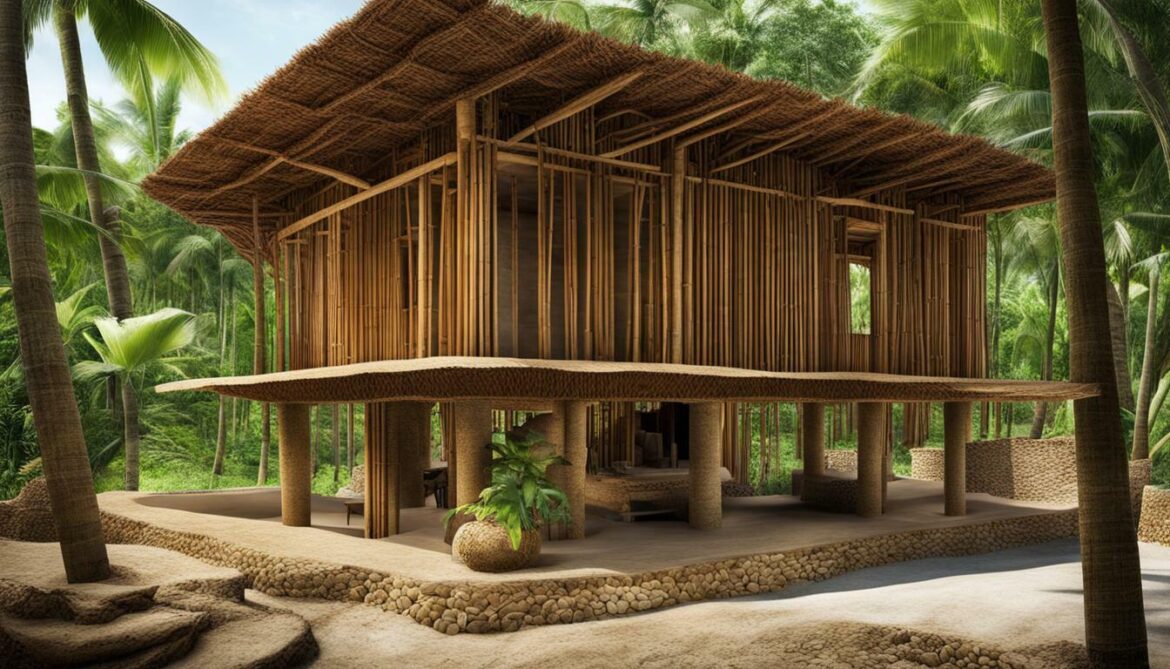
These sustainable construction techniques have not only contributed to the overall sustainability of the Dominican Republic, but also serve as a model for other countries to follow in their own construction practices. By prioritizing the environment in construction, the Dominican Republic is setting an example for the importance of sustainability in modern development.
Green Infrastructure in Dominican Republic
The Dominican Republic has implemented various environmental policies and initiatives towards the development of green infrastructure. By integrating sustainable features in urban planning and infrastructure development, the country aims to preserve and protect its natural resources.
One of the most notable initiatives is the Green Energy Project, which aims to reduce the country’s reliance on imported fossil fuels and promote the use of renewable energy sources. The project involves the installation of wind turbines and solar panels across the country, providing clean and sustainable energy to thousands of households.
| Green Initiatives | Description |
|---|---|
| Green roofs | The construction of green roofs on buildings to reduce the heat island effect and improve air quality. |
| Bike lanes | Implementation of bike lanes in cities to encourage active transport and reduce greenhouse gas emissions. |
| Waste management | Initiatives to promote proper waste management and recycling practices to reduce landfill waste and pollution. |
Another key initiative is the integration of green spaces in urban areas. The government has implemented programs to increase the number of parks and public gardens in cities, improving air quality and providing recreational spaces for residents.
The country is also investing in sustainable transportation, with the introduction of electric buses and the development of a metro system in Santo Domingo. These initiatives help to reduce greenhouse gas emissions and promote cleaner air in the city.
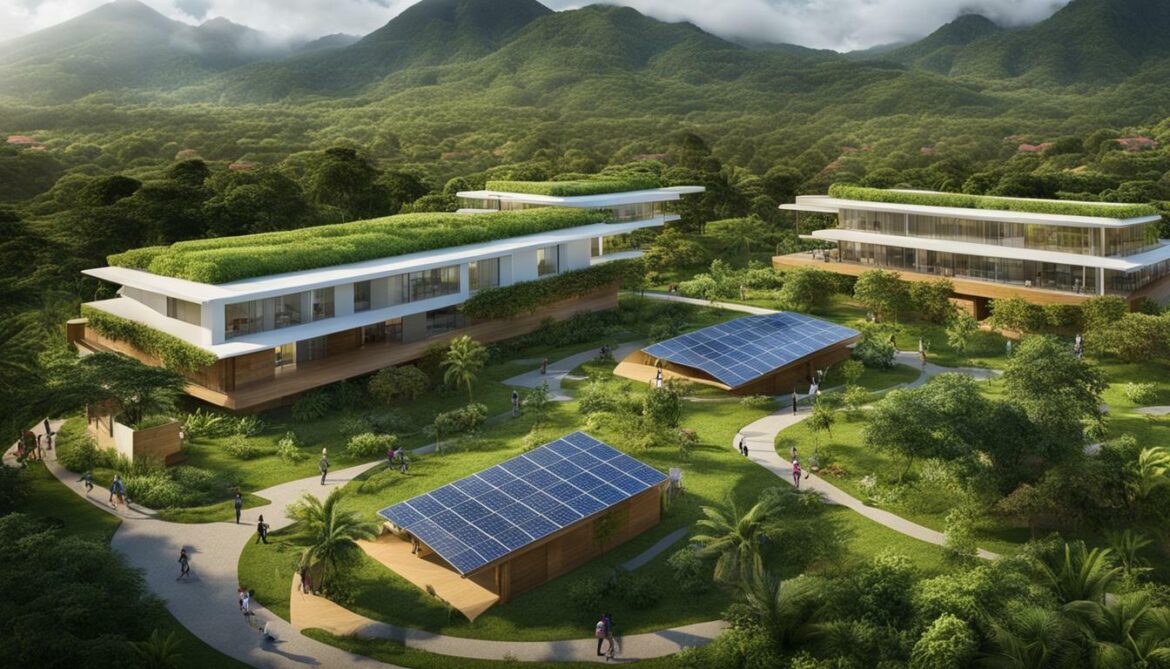
Overall, the Dominican Republic’s commitment to green infrastructure is a significant step towards achieving a sustainable future. By prioritizing the preservation of natural resources and implementing eco-friendly solutions, the country is setting an example for the world.
Sustainable Building in the Dominican Republic
Throughout history, the Dominican Republic has faced numerous environmental challenges. However, the country has made significant strides in recent years in embracing green building practices and sustainable design.
Dominican Republic Green Building History
The history of green building in the Dominican Republic dates back to the 1970s, when the first passive solar houses were designed. Since then, the country has continued to develop its sustainable building practices, culminating in the adoption of several environmental initiatives in the early 2000s.
Sustainable Design in the Dominican Republic
Sustainable design has played a crucial role in the Dominican Republic’s green building development. The country has implemented several environmental initiatives to promote sustainable design concepts, such as energy-efficient appliances, water conservation systems, and the use of renewable materials.
Eco-Friendly Construction Practices in the Dominican Republic
The Dominican Republic has also made significant advancements in eco-friendly construction practices, such as reducing energy consumption during the construction process, minimizing waste, and incorporating recycled materials into the building design. These efforts have reduced the carbon footprint of construction, contributing to the overall sustainability of the region.
Sustainable Architecture in the Dominican Republic
Notable examples of sustainable architecture in the Dominican Republic include the Altos de Chavón Cultural Centre, which integrates with the natural surroundings, and the Rural Schools Project, which prioritizes energy efficiency and the use of renewable energy sources. These buildings showcase the country’s commitment to sustainable architecture and green building practices.
Renewable Energy Projects in the Dominican Republic
The Dominican Republic has implemented several renewable energy projects, such as solar power and wind farms, to harness clean and sustainable energy sources. These projects have reduced the country’s dependency on fossil fuels, and contributed to the overall sustainability of the region.
Sustainable Construction Techniques in the Dominican Republic
Several innovative sustainable construction techniques have been adopted in the Dominican Republic, such as the use of green roofs to enhance energy efficiency and reduce stormwater runoff. These techniques have proven effective in minimizing the environmental impact of construction and promoting long-term sustainability.
Green Infrastructure in the Dominican Republic
The Dominican Republic has implemented several environmental policies and initiatives aimed at promoting green infrastructure and sustainable urban planning. These policies encourage the integration of sustainable features, such as green spaces, into infrastructure development, contributing to the overall sustainability of the region.
Conclusion
The Dominican Republic has come a long way in embracing green building practices and sustainable design, driven by various environmental initiatives and building codes. These efforts have resulted in the adoption of eco-friendly construction practices, sustainable architecture, and renewable energy projects throughout the country. The Dominican Republic’s commitment to sustainability is an essential step towards preserving the region’s natural resources for future generations.
FAQ
What is the history of green building in the Dominican Republic?
The history of green building in the Dominican Republic dates back to the early beginnings of sustainable design. Over the years, the country has progressively embraced eco-friendly construction practices and sustainable architecture, placing a strong emphasis on minimizing environmental impact and promoting long-term sustainability.
What is sustainable design in the Dominican Republic?
Sustainable design in the Dominican Republic refers to the incorporation of eco-friendly elements and practices in architectural designs. This includes the use of renewable materials, energy-efficient systems, and integration with the natural surroundings. The country has implemented various environmental initiatives to promote sustainable design and prioritize the conservation of its natural resources.
How are eco-friendly construction practices adopted in the Dominican Republic?
The Dominican Republic has embraced eco-friendly construction practices to minimize environmental impact. This includes the use of innovative techniques and materials that enhance energy efficiency, reduce waste, and promote sustainability. The country’s commitment to green building development has led to the adoption of cutting-edge methods that prioritize both the well-being of the environment and the well-being of its inhabitants.
What is sustainable architecture in the Dominican Republic?
Sustainable architecture in the Dominican Republic focuses on creating buildings that prioritize energy efficiency, use of renewable materials, and integration with the natural surroundings. Notable examples of sustainable architecture in the country showcase innovative designs that reduce carbon footprint, enhance natural ventilation, and promote the overall sustainability of the region.
What are some renewable energy projects in the Dominican Republic?
The Dominican Republic has implemented various renewable energy projects to harness clean and sustainable energy sources. These projects include solar power installations, wind farms, and hydroelectric power plants. By diversifying its energy sources and reducing reliance on fossil fuels, the country is contributing to a greener and more sustainable future.
What sustainable construction techniques are used in the Dominican Republic?
In the Dominican Republic, sustainable construction techniques focus on reducing environmental impact and enhancing energy efficiency. This includes the use of recycled materials, implementation of energy-efficient systems, adoption of green building certifications, and application of innovative construction methods to minimize waste and promote sustainability.
How is green infrastructure implemented in the Dominican Republic?
The Dominican Republic has prioritized the integration of green infrastructure in its urban planning and infrastructure development. This includes the implementation of environmental policies and initiatives that promote the incorporation of sustainable features, such as green spaces, bike lanes, and renewable energy generation, into the country’s infrastructure. These efforts aim to create a more sustainable and livable environment for its residents.
What is the significance of green building in the Dominican Republic’s history?
Green building has played a significant role in the history of the Dominican Republic. It has contributed to the preservation of the country’s natural resources, reduction of carbon emissions, and promotion of sustainable development. Through the adoption of eco-friendly practices and the integration of green infrastructure, the Dominican Republic continues to prioritize the well-being of its environment and future generations.




